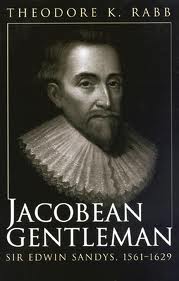
After Shakespeare's death, the poet and dramatist Ben Jonson was the leading literary figure of the Jacobean era (The reign of James I). However, Jonson's aesthetics hark back to the Middle Ages rather than to the Tudor Era: his characters embody the theory of humours. According to this contemporary medical theory, behavioral differences result from a prevalence of one of the body's four "humours" (blood, phlegm, black bile, and yellow bile) over the other three; these humours correspond with the four elements of the universe: air, water, fire, and earth. This leads Jonson to exemplify such differences to the point of creating types, or clichés.
Jonson is a master of style, and a brilliant satirist. His Volpone shows how a group of scammers are fooled by a top con-artist, vice being punished by vice, virtue meting out its reward.
Others who followed Jonson's style include Beaumont and Fletcher, who wrote the brilliant comedy, The Knight of the Burning Pestle, a mockery of the rising middle class and especially of those nouveaux riches who pretend to dictate literary taste without knowing much literature at all. In the story, a couple of grocers wrangle with professional actors to have their illiterate son play a leading role in a drama. He becomes a knight-errant wearing, appropriately, a burning pestle on his shield. Seeking to win a princess' heart, the young man is ridiculed much in the way Don Quixote was. One of Beaumont and Fletcher's chief merits was that of realising how feudalism and chivalry had turned into snobbery and make-believe and that new social classes were on the rise.
Another popular style of theatre during Jacobean times was the revenge play, popularized by John Webster and Thomas Kyd. George Chapman wrote a couple of subtle revenge tragedies, but must be remembered chiefly on account of his famous translation of Homer, one that had a profound influence on all future English literature, even inspiring John Keats to write one of his best sonnets.
The King James Bible, one of the most massive translation projects in the history of English up to this time, was started in 1604 and completed in 1611. It represents the culmination of a tradition of Bible translation into English that began with the work of William Tyndale. It became the standard Bible of the Church of England, and some consider it one of the greatest literary works of all time. This project was headed by James I himself, who supervised the work of forty-seven scholars. Although many other translations into English have been made, some of which are widely considered more accurate, many aesthetically prefer the King James Bible, whose meter is made to mimic the original Hebrew verse. Besides Shakespeare, whose figure towers over the early 17th century, the major poets of the early 17th century included John Donne and the other Metaphysical poets. Influenced by continental Baroque, and taking as his subject matter both Christian mysticism and eroticism, metaphysical poetry uses unconventional or "unpoetic" figures, such as a compass or a mosquito, to reach surprise effects. For example, in "A Valediction: Forbidding Mourning", one of Donne's Songs and Sonnets, the points of a compass represent two lovers, the woman who is home, waiting, being the centre, the farther point being her lover sailing away from her. But the larger the distance, the more the hands of the compass lean to each other: separation makes love grow fonder. The paradox or the oxymoron is a constant in this poetry whose fears and anxieties also speak of a world of spiritual certainties shaken by the modern discoveries of geography and science, one that is no longer the centre of the universe. Apart from the metaphysical poetry of Donne, the 17th century is also celebrated for its Baroque poetry. Baroque poetry served the same ends as the art of the period; the Baroque style is lofty, sweeping, epic, and religious. Many of these poets have an overtly Catholic sensibility (namely Richard Crashaw) and wrote poetry for the Catholic counter Reformation in order to establish a feeling of supremacy and mysticism that would ideally persuade newly emerging Protestant groups back toward Catholicism.

0 comments:
Post a Comment